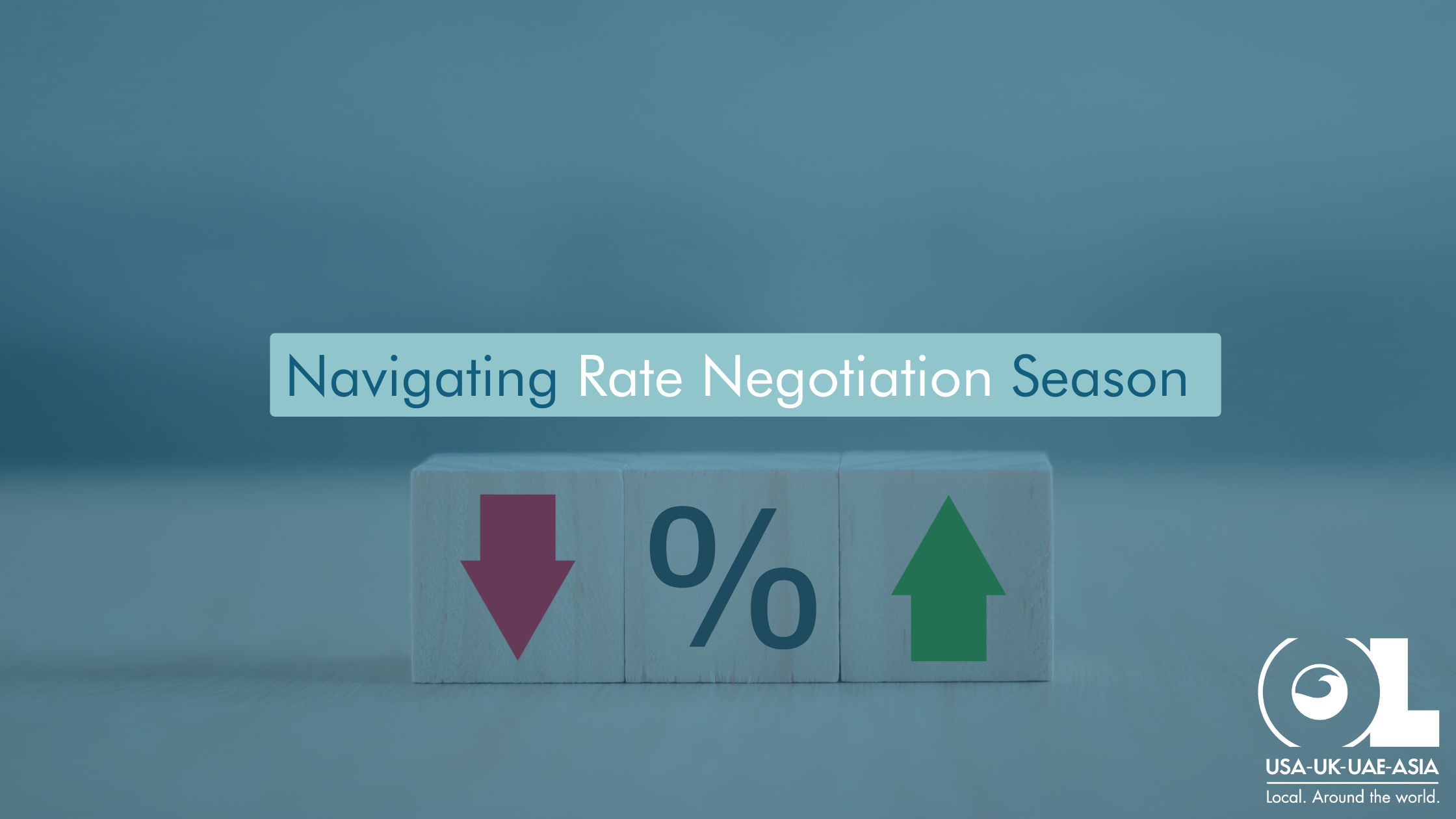In today’s dynamic freight industry, effective rate negotiation between shippers and third-party logistics (3PL) providers is more crucial than ever before. As we enter 2024, amidst fluctuating market conditions and evolving customer demands, mastering the art of navigating rate negotiation season is paramount for sustainable supply chain management and business success.
The freight industry is in a state of constant flux, influenced by a myriad of factors including fuel price volatility, capacity constraints, regulatory changes, and global economic shifts. Against this backdrop, securing competitive rates requires shippers to employ sophisticated negotiation strategies and foster collaborative partnerships with their 3PL providers.
In this guide, we’ll explore actionable strategies for shippers to navigate rate negotiation season successfully in 2024 while maximizing value from their partnerships with 3PL providers. From leveraging market insights to harnessing the power of data analytics, from fostering transparent communication to embracing innovative technology solutions, we’ll equip shippers with the tools and knowledge needed to drive efficiency and profitability in their freight operations.
By empowering shippers with practical advice and industry insights, we aim to facilitate mutually beneficial relationships between shippers and 3PL providers. Together, let’s navigate the complexities of rate negotiation season with confidence and ensure the smooth flow of goods across the freight industry landscape.
Understanding the Landscape:
Current Market Trends and Challenges: The freight industry is subject to constant shifts influenced by various economic, regulatory, and environmental factors. Shippers need to be aware of trends such as the rise of e-commerce, globalization, and shifting consumer preferences. Challenges like fuel price fluctuations, capacity constraints due to driver shortages or infrastructure limitations, and regulatory changes like emission standards or trade policies can significantly impact pricing dynamics.
Factors Affecting Pricing Dynamics: Fuel costs, often volatile, directly impact transportation expenses. Capacity constraints, stemming from a shortage of drivers or equipment, lead to higher demand for freight services, thus affecting rates. Regulatory changes, such as new emission standards or safety regulations, can also influence pricing by imposing additional costs on carriers. Shippers must understand these factors to anticipate changes and negotiate effectively.
Importance of Industry Awareness: In a rapidly evolving industry, staying informed about market trends, regulatory updates, and emerging technologies is crucial for shippers to negotiate competitive rates. Regularly monitoring industry publications, attending conferences, and engaging with industry experts can provide valuable insights that inform negotiation strategies.
Building a Collaborative Relationship:
Strengthening Partnerships: A strong partnership between shippers and 3PL providers is essential for achieving mutual success. By aligning goals and fostering transparency, both parties can work towards common objectives, such as cost optimization and service excellence.
Benefits of Collaboration: Collaborative relationships foster trust, allowing for more open communication and a deeper understanding of each other’s needs and challenges. Shared goals promote synergy and innovation, leading to improved efficiency and performance across the supply chain.
Encouraging Communication: Open communication channels between shippers and 3PL providers are vital for addressing concerns, resolving issues promptly, and exploring new opportunities. Regular meetings, feedback sessions, and joint planning initiatives facilitate alignment and strengthen the partnership over time.
Leveraging Data and Analytics:
Harnessing Data Insights: Data-driven insights play a crucial role in informing rate negotiation strategies. By analyzing historical shipment data, market trends, and performance metrics, shippers can identify cost-saving opportunities and optimize supply chain efficiency.
Optimizing Supply Chain Efficiency: Advanced analytics enable shippers to optimize transportation routes, minimize empty miles, and consolidate shipments, leading to reduced costs and improved resource utilization. Predictive analytics can also help anticipate future demand patterns, enabling proactive decision-making.
3PL Capabilities in Data Utilization: Leading 3PL providers leverage sophisticated data analytics tools and technologies to derive actionable insights from vast amounts of supply chain data. By harnessing data to drive informed decision-making, 3PL providers can negotiate favorable rates and deliver value-added services to shippers.
Customizing Solutions:
Tailoring Services to Needs: Every shipper has unique requirements based on their industry, product type, and distribution network. 3PL providers offer customized solutions tailored to meet these specific needs, whether it’s optimizing transportation modes, designing efficient routes, or implementing freight consolidation strategies.
Case Studies and Testimonials: Showcase successful collaborations between shippers and 3PL providers, highlighting how tailored solutions have delivered tangible benefits such as cost savings, improved delivery times, and enhanced customer satisfaction. Real-world examples demonstrate the effectiveness of customization in addressing specific supply chain challenges.
Embracing Technology:
Streamlining Negotiation Processes: Technology plays a pivotal role in streamlining rate negotiation processes, enabling faster, more efficient communication and decision-making. Digital platforms and automation tools simplify administrative tasks, allowing both parties to focus on strategic discussions and value-added activities.
Enhancing Visibility and Efficiency: Real-time tracking technologies provide greater visibility into shipment status and location, enabling proactive monitoring and intervention when necessary. This enhances efficiency by reducing delays and mitigating risks, ultimately improving overall supply chain performance.
Innovative Technologies Offered by 3PL Providers: Leading 3PL providers offer a range of innovative technologies, such as predictive analytics, IoT-enabled devices, and blockchain solutions, to optimize supply chain operations and enhance collaboration with shippers. These technologies not only streamline rate negotiation but also drive continuous improvement and innovation throughout the supply chain.



